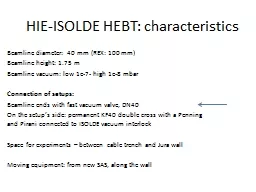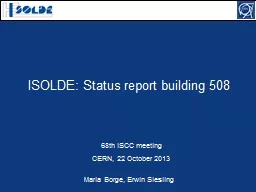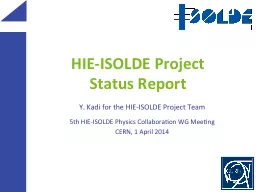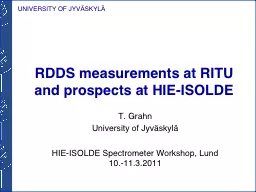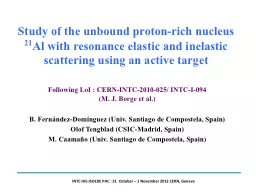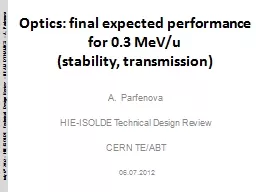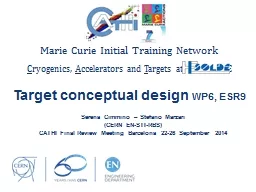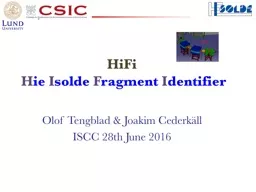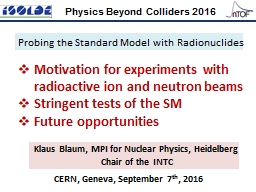PPT-HIE-ISOLDE HEBT: characteristics
Author : marina-yarberry | Published Date : 2016-10-14
Beamline diameter 40 mm REX 100 mm Beamline height 175 m Beamline vacuum low 1e7 high 1e8 mbar Connection of setups Beamline ends with fast vacuum valve DN40 On
Presentation Embed Code
Download Presentation
Download Presentation The PPT/PDF document "HIE-ISOLDE HEBT: characteristics" is the property of its rightful owner. Permission is granted to download and print the materials on this website for personal, non-commercial use only, and to display it on your personal computer provided you do not modify the materials and that you retain all copyright notices contained in the materials. By downloading content from our website, you accept the terms of this agreement.
HIE-ISOLDE HEBT: characteristics: Transcript
Download Rules Of Document
"HIE-ISOLDE HEBT: characteristics"The content belongs to its owner. You may download and print it for personal use, without modification, and keep all copyright notices. By downloading, you agree to these terms.
Related Documents

